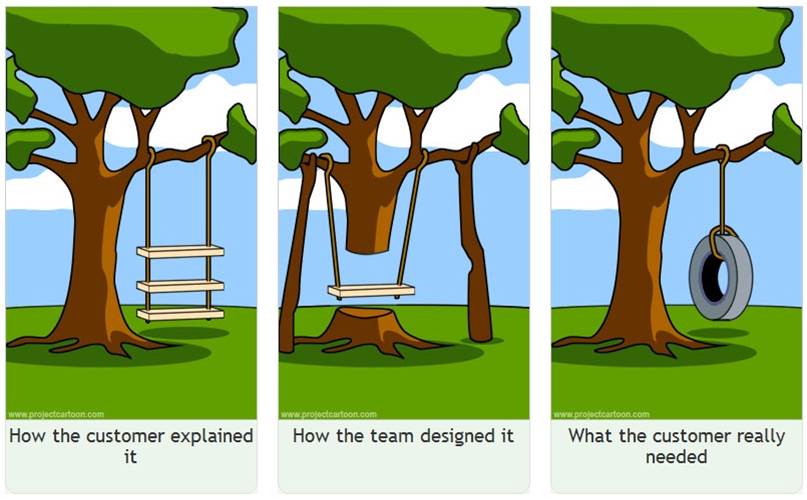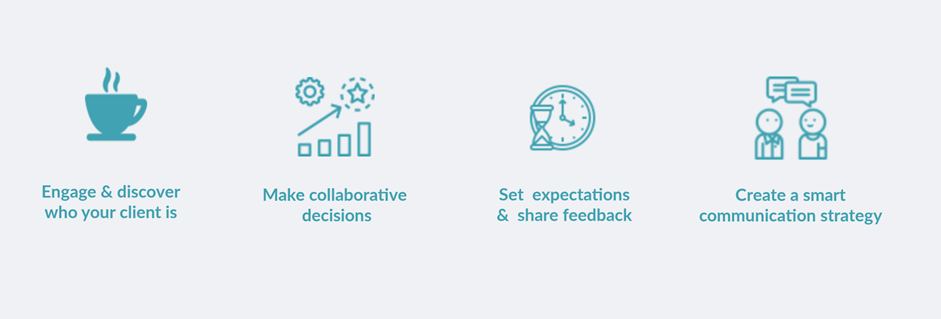
Life as a PM: Why you should strive for making your clients accountable, not just happy
Angeliki Koumani21 Sep 19
Looking back to my research interviews with project managers, there is one specific aspect of PMs’ challenges that is coming up in a lot of the stories I’ve heard, the client management challenge.
I remember a conversation where one of my interviewees, while explaining how he communicates delays, painfully exclaimed at the end If only I could make my clients love me! When I asked him why, he simply replied So they would react better when I deliver bad news to them.
And that’s hardly the only case. Here is what a project director replied to me after I asked him what was the biggest challenge he was facing at his work: Meeting the client demands and make sure they are happy with the final result of the project and really understanding what's in their head and then translating that into strategy and then translating that into a project plan and then translating that into something tangible is the hardest thing. Because often the client will have something very unusual in their head and we need to turn that into reality and the journey along the way of taking the imagination and making it really can be full with danger.

Indeed forging good client relationships is one of the most challenging but vital aspects during a project’s lifecycle. More than 70% percent of my interviewees have identified that misalignment of original project scope and problematic communication, including difficulty in accepting one’s responsibility in causing delays, is one of the most common factors of distress and project failure. Successful projects, instead, were always described as cases where a good collaboration between project managers/agency employees and clients/client-site employees was established and both parties contributed and honoured their respective responsibilities.
How to establish good client relationships in 4 steps
Just focusing on keeping your clients happy and trying to entertain their demands is not going to help you if your clients are detached from your processes, whereas, making them accountable and acknowledging their contribution and role to play can take you a long way. With that in mind, here are some steps to help you establish good client relationships.

Step 1. Take them out for a cuppa
Remember the part above about not turning your sole focus on trying to make your clients happy? That’s still valid but that doesn’t mean you shouldn’t try to be engaging and work to establish some good old human interaction. You could be in a typical business environment but knowing your stakeholders on a more personal level and discovering common traits even for the most mundane things, can help you forge stronger relationships and make work more fun. So early on into the project extend an invite for a cup of coffee, have an informal chat and try to build some common ground and discover who is your client, how do they like to work and figure out how to be successful together.
Step 2. Decide KPIs together
One way to make sure that your clients are going to follow through with their commitments is to make sure that they have a say in what these will be. If they are feeling uninvolved in the collective project goals or even in the tasks they need to perform or that they do not hold any control throughout the process, it will be easier for them to disengage which could lead to delays and missed targets. One technique we use to help us make inclusive decisions at Mindiply is collaborative decision making with dot voting.
Step 3. Outline expectations clearly & create a feedback loop
Communicating expectations clearly and assigning tasks and deadlines is vital. Get all of your stakeholders together, including all the people from the client site, and talk about plans, show the project timeline and outline what needs to be done, by whom and when. Discuss any elephants in the room and make sure everyone is in agreement and feel comfortable about their responsibilities before moving on. Make sure you showcase what are the main goals and KPIs next to your timeline so you can be sure you are all aligned and your client reaffirms their commitment to them. It’s also useful during the execution stages to establish points of contact and create a frequent feedback loop with your clients no matter how busy they are. This way you get to solve problems before they start costing you in time and money, you will avoid any last minute changes that could extend your timelines and you can re-prioritise activities faster if needed.
Step 4. Nail your communication strategy
Nobody wants to deliver bad news, but the reality is that a missed deadline, a bug in development or an underestimation of a task are common especially in project delivery. Discussing failure to hit targets or about the sudden increase of the project’s cost is an uncomfortable experience to say the least. A good tip to make the most out of this situation is to have an honest conversation with your client the soonest you can, but it’s important to offer a proposed solution to the problem too. This way you switch the focus from the negative occurrence to the positive outcome, while still establishing transparency and honesty between you and your clients.
Bottom line
Focusing on keeping your clients happy and trying to entertain their demands is not going to help you if your clients are detached from your processes, whereas, making them accountable and acknowledging their contribution and role to play can take you a long way.







